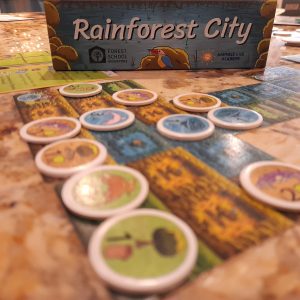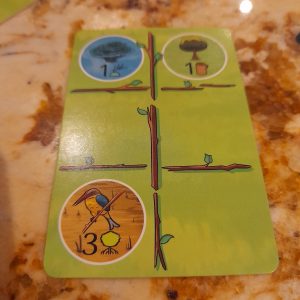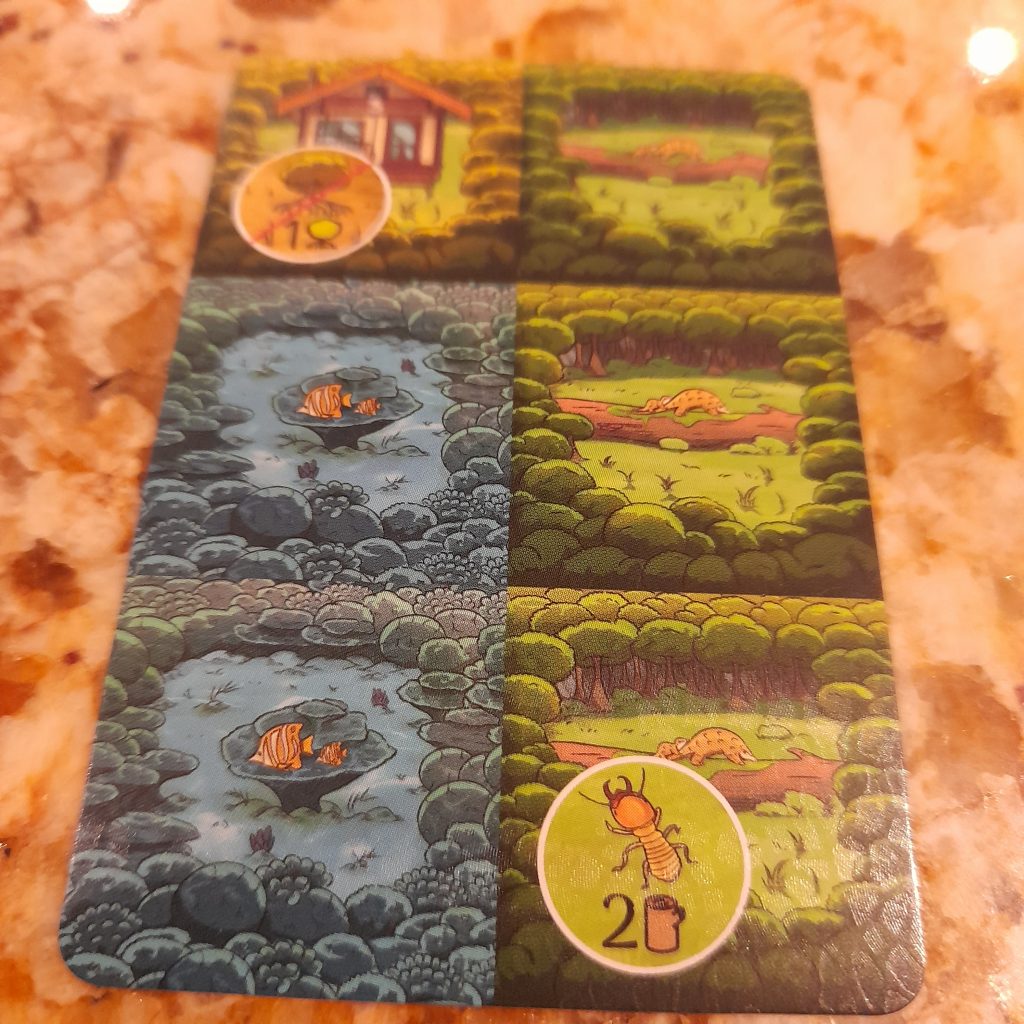Pangolins, mangrove trees and coral fish. In Origame’s Rainforest City, we are celebrating and conserving Singapore’s unique biodiversity!
Publisher: Origame , ForestSchoolSingapore
Designer: Daryl Chow
Artist: N/A
Release date: 2021
1-4 Players
Age: 8+
<30 mins
Favouritefoefunlearning Score: 8/10
*Card laying* Strategic * funlearning* Easy to Learn * Open Information * Simultaneous Play * Pattern Matching * Passive/Active Play *
I have said it before, but it is worth saying it again. Board games are an education. Mechanics, themes, the opportunity to communicate ideas. Everything is a learning opportunity wrapped up in a big invisibility cloak of fun.
And Rainforest City by Origame is a game that seeks to showcase and teach us about ecosystems and biodiversity in a very specific part of the world; Singapore. Having very little personal knowledge of Asian culture, I always look forward to games designed by Daryl Chow. He celebrates his heritage, background, and environment in his designs. He brings modern Asian board games to our tables and invites us to find out more about the place he calls home.
Having never seen a pangolin or a mangrove tree, I was just as excited to play Rainforest City as I was to introduce it to Mini-Meeple! And Rainforest City did not disappoint!
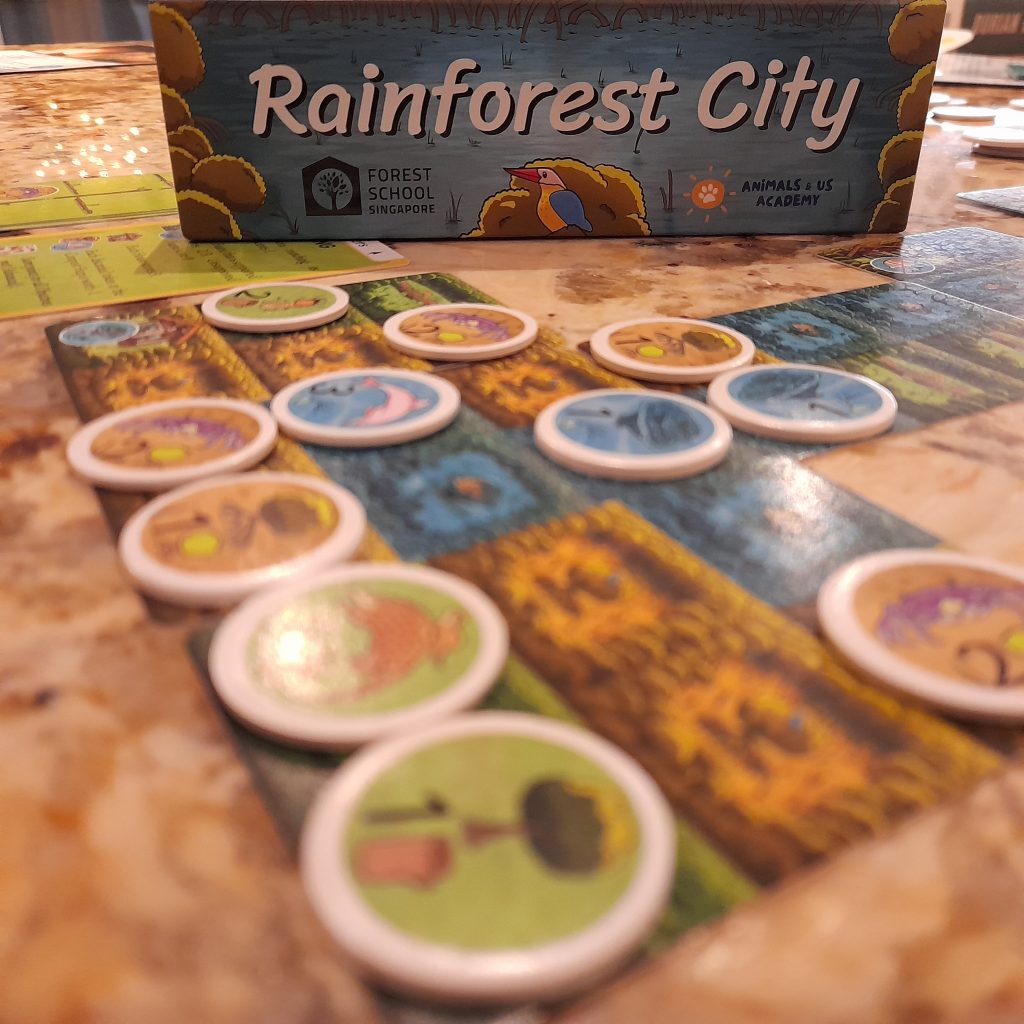
Puzzly Pangolins!
Rainforest City is a card laying game for 1 – 4 players about the flora and fauna found in Singapore. In the game, we are each building out a landscape made up of different habitats that are capable of supporting different species.
But, as well as a home to call their own, like in the real world, they also need food in order to survive. As such, creating food chains that can sustain the animals you home is just as important as making them comfortable in the first place
So this is a strategic, puzzly territory building take on Singaporean biodiversity for sure. But, unlike a lot of tile laying/card laying games of this type, Rainforest City features a novel turn-dial mechanism that determines what each player can make use of each turn.
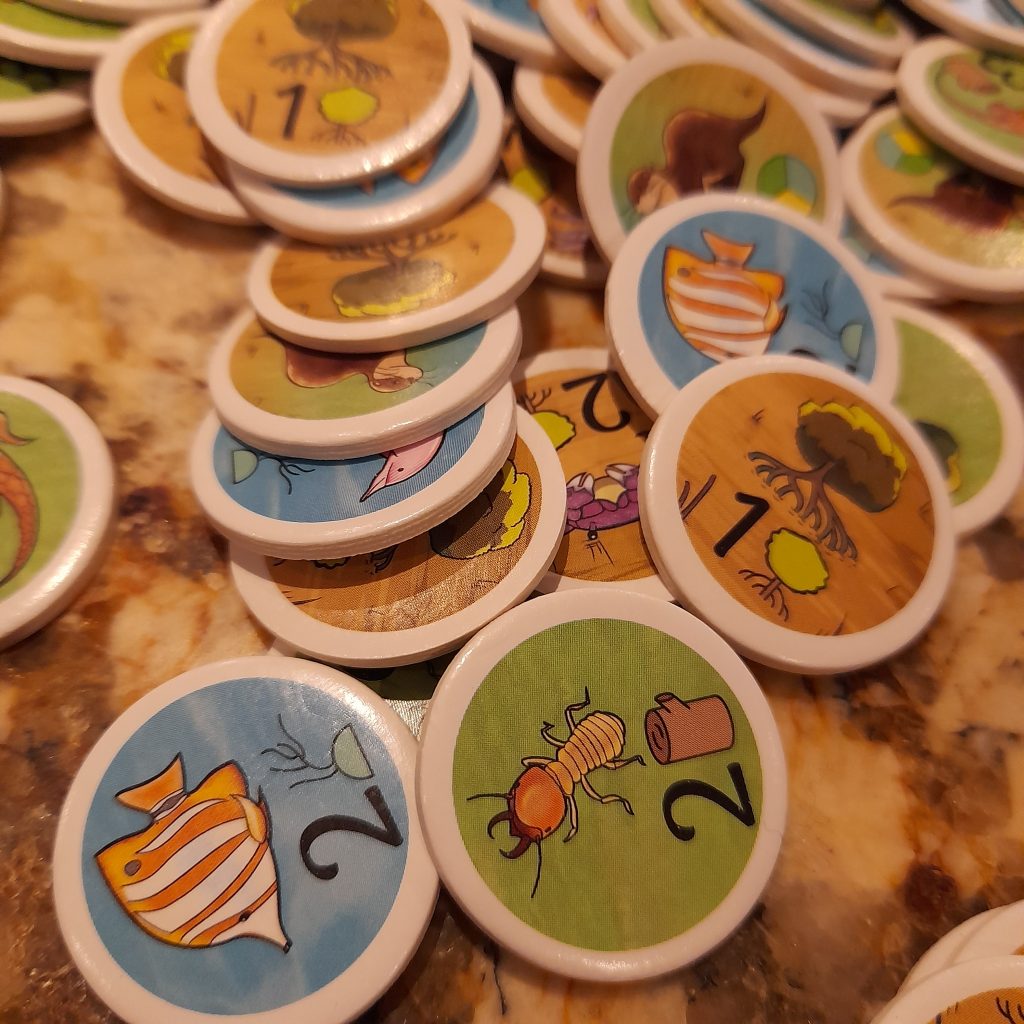
Spin for Singapore!
How does it work? Well, once the active player has turned the dial and chosen their cards (leaving the other players to pick from the two cards their fruit player token points towards), players simultaneously lay down their selected territory cards matching up at least one adjacent habitat type.
Interestingly, the flora and fauna cards (which contain the point scoring plant and animal life tokens), are only used to locate tokens rather than make up part of the landscape.
Any tokens players cannot place on their landscape that turn (because the territory types do not match the orientation of the flora and fauna card selected) are consigned to the compost heap ready for negative marking at end game! A
And should an animal not have a food chain to sustain it (by having the necessary number of lower value animals in their habitat) by end game , they score nothing too!
With passive and active actions, as well as the fate of the cards being in the hands of lady luck, you might not always get what you need or want. This means that you have to focus on balancing habitat building and token banking which creates a light but enjoyable tension.
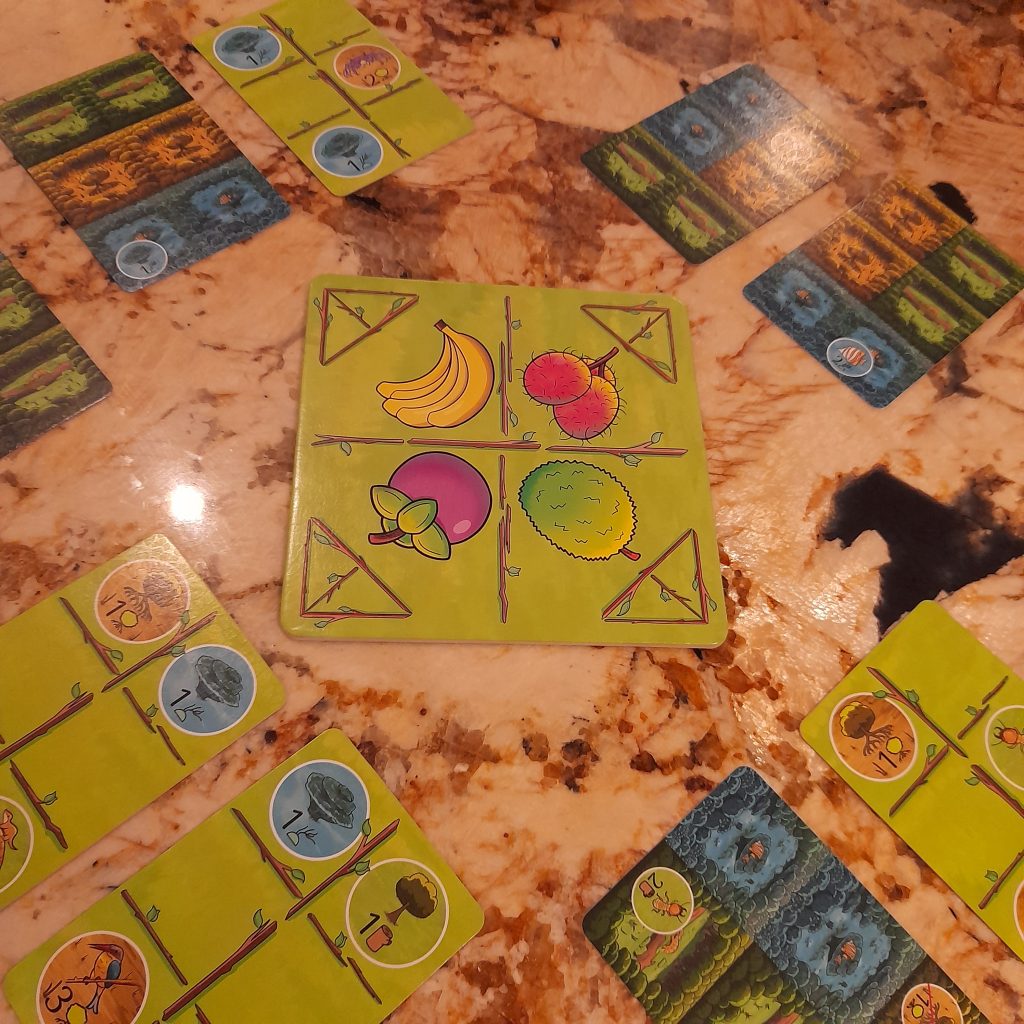
Enjoyable Ecosystems!
This game hits a sweet spot for us. Puzzly, strategic, and featuring a few twists on the usual tile/card laying mechanic. It also plays fast once you get going. I would say that the rules make it sound more complicated than it is, which is a shame. But please don’t be put off by that as it is not difficult to understand or play once everyone settles into their green groove.
Mini-meeple has really enjoyed Rainforest City. His pattern matching skills are getting really good, and so adding the food chain requirement into the mix is a strong and steady leap forwards in terms of planning and strategy. His curiosity about the pangolin and coral fish was also piqued, and since then we have researched more about their habitats and the eco-diversity in Singapore. That he also attends Forest School here in the UK meant that he was incredibly excited to see that this game was made in collaboration between Origame and Forest School Singapore.
Placing tokens in the compost heap still hurts Mini-meeple, but it is really solidifying the idea that plant and animal life is dependent upon respect. That we humans are part of something bigger than ourselves, which we must work hard to nurture if we are to not just survive, but thrive.
It generates a conversation (like Planet) that takes us beyond ourselves and into the realms of conservation. Realising that these creatures and flora might not be around in years to come as a direct result of our actions comes as a shock to Mini-meeple. With his engineering grain switched on, he’s immediately thinking of things we can do as a family and globally to ensure that doesn’t happen.
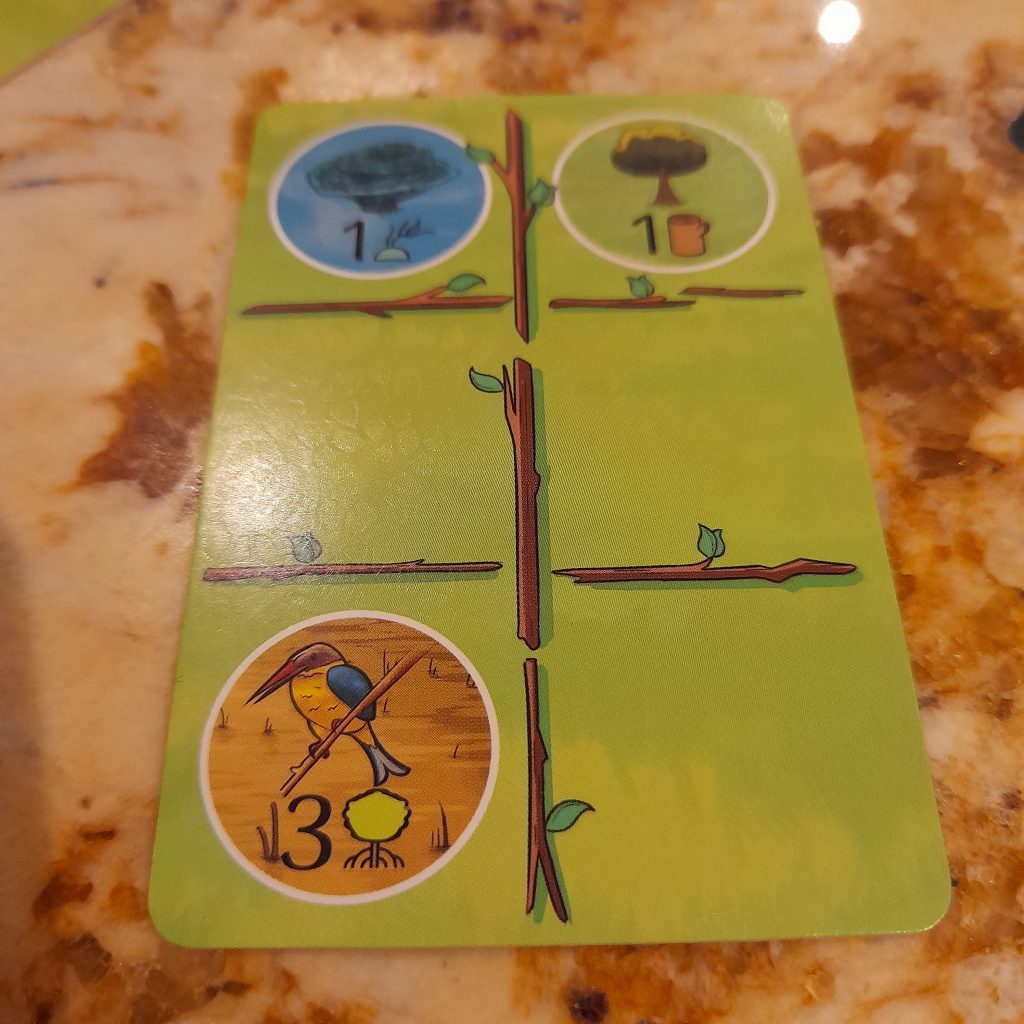
The fact that there are advanced mode, co-operative and solo ways to play Rainforest City really reinforces accessibility and dynamism of the game itself. It makes me realise that conservation can begin with a single act. Education.
[Please note that a copy of this game was kindly provided by the publishers for review. I am not paid for my comments, however, and all opinions are my own]. I am also not affiliated to or sponsored by any retail store.


